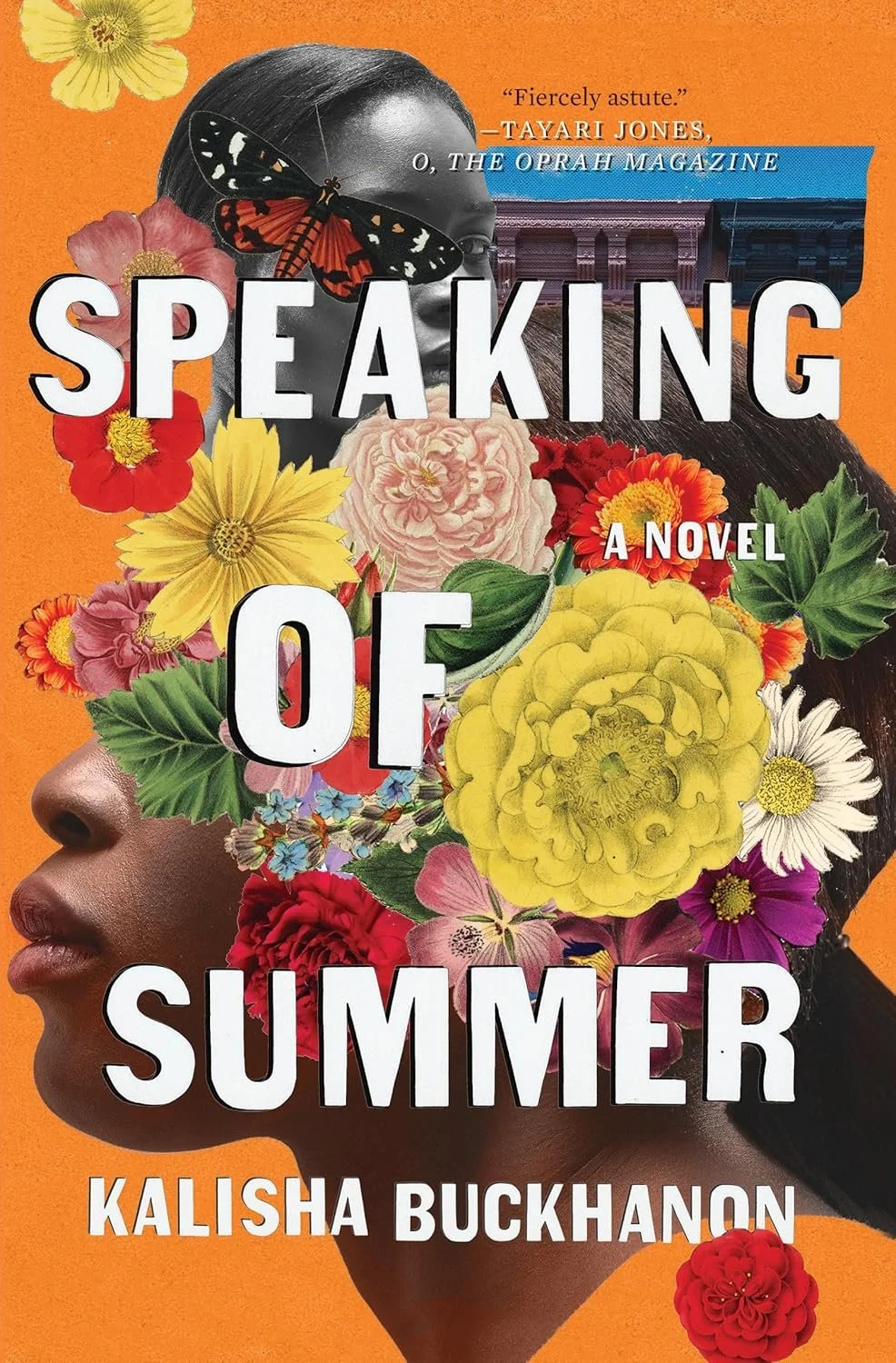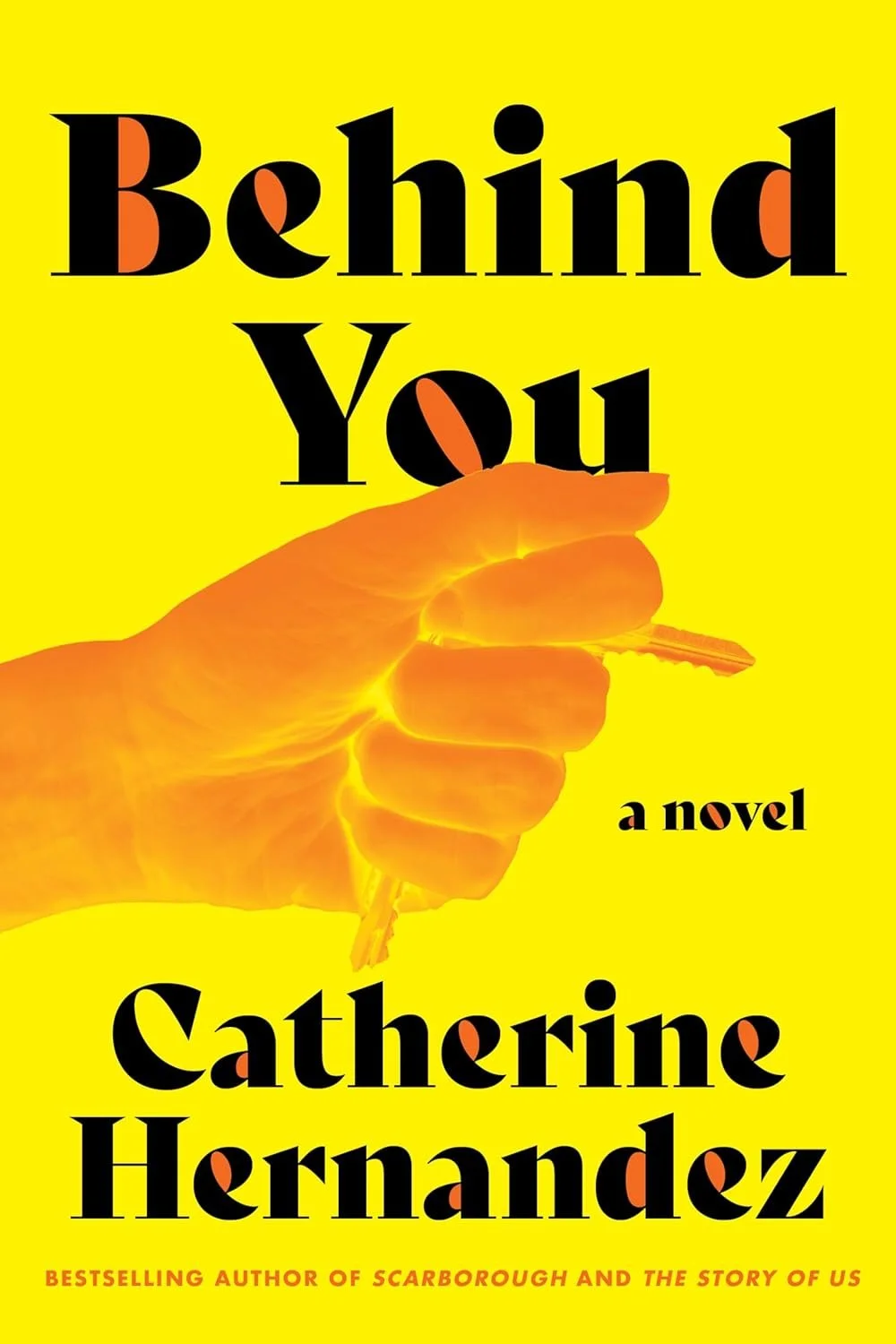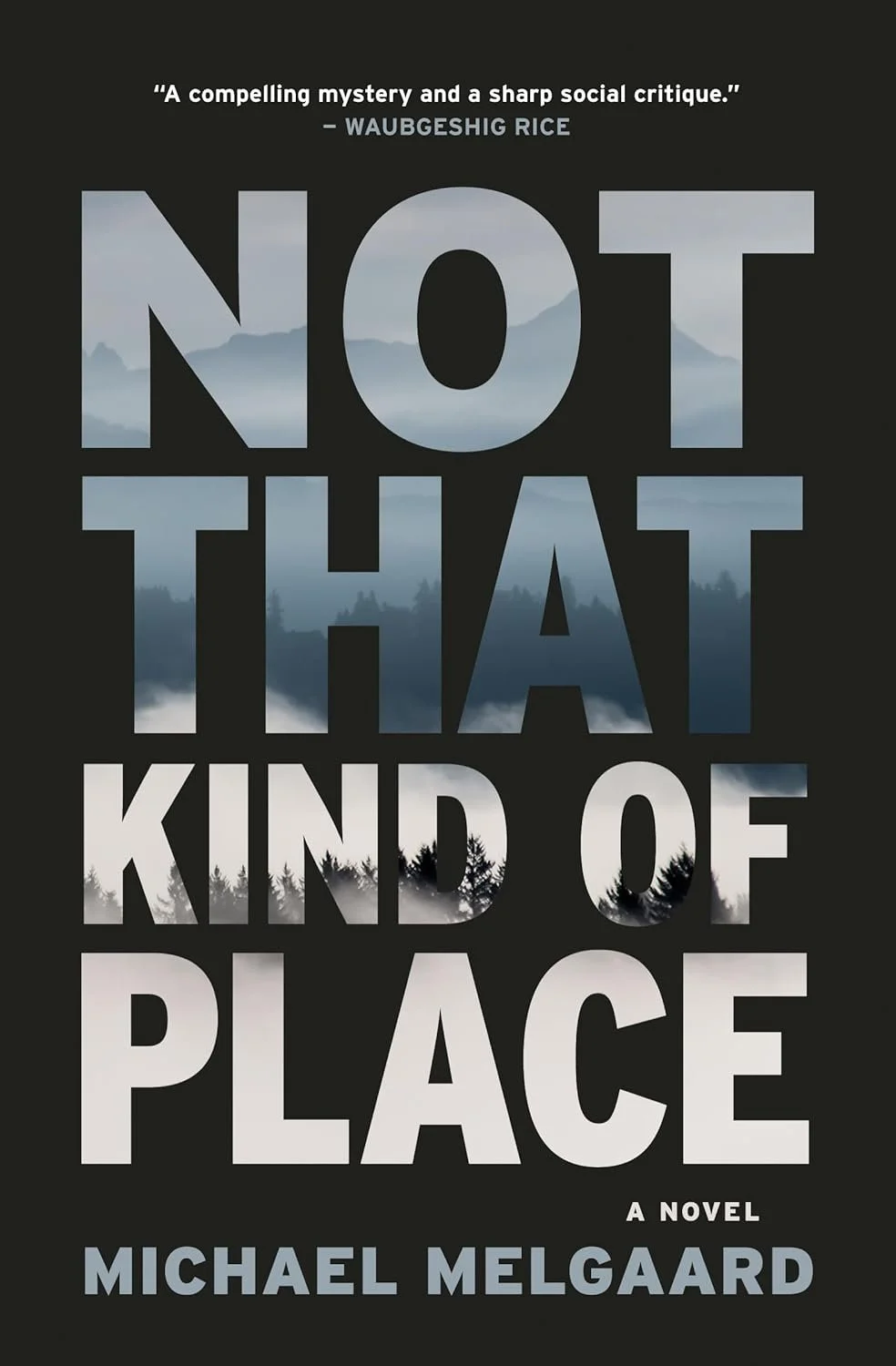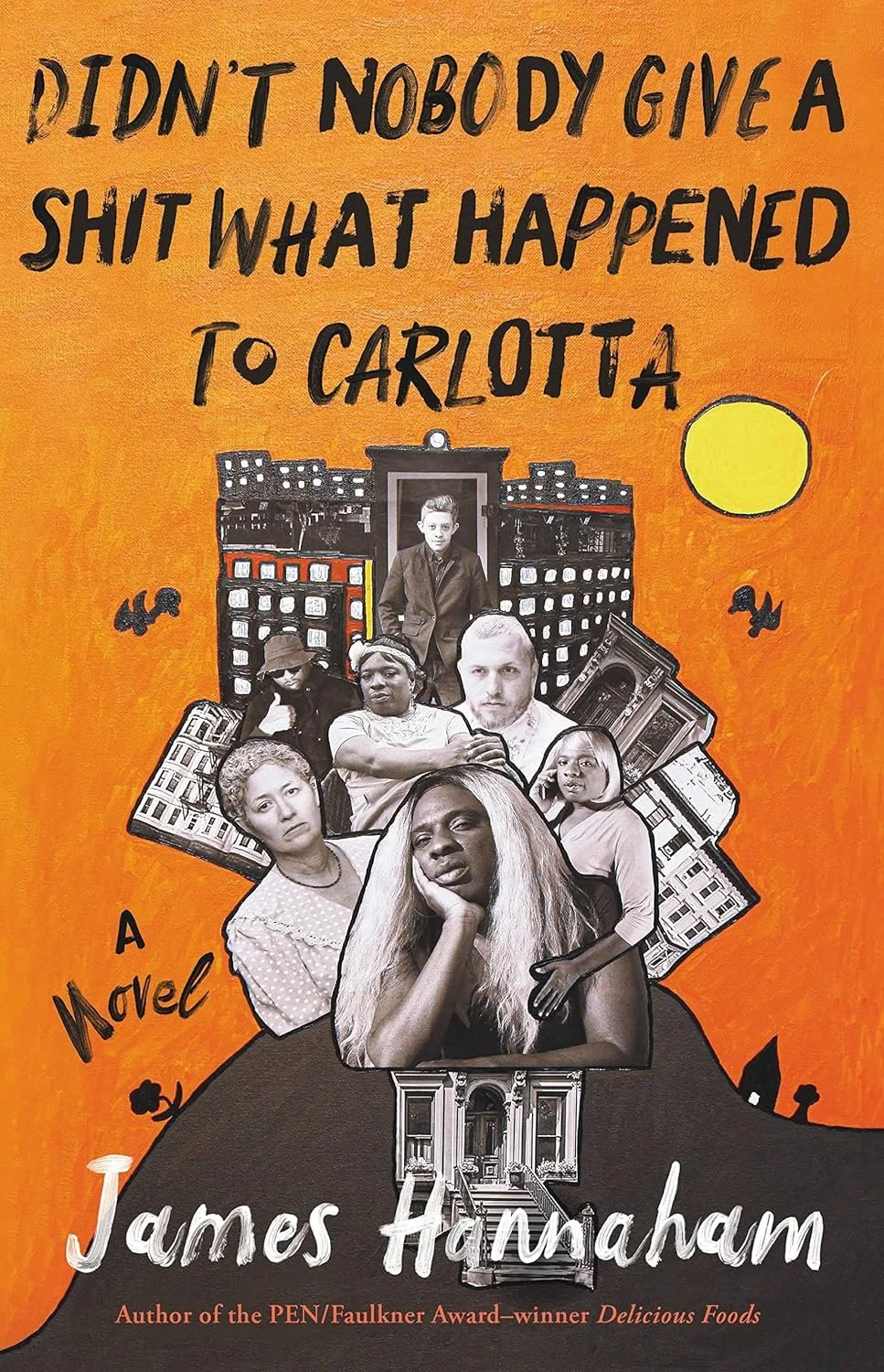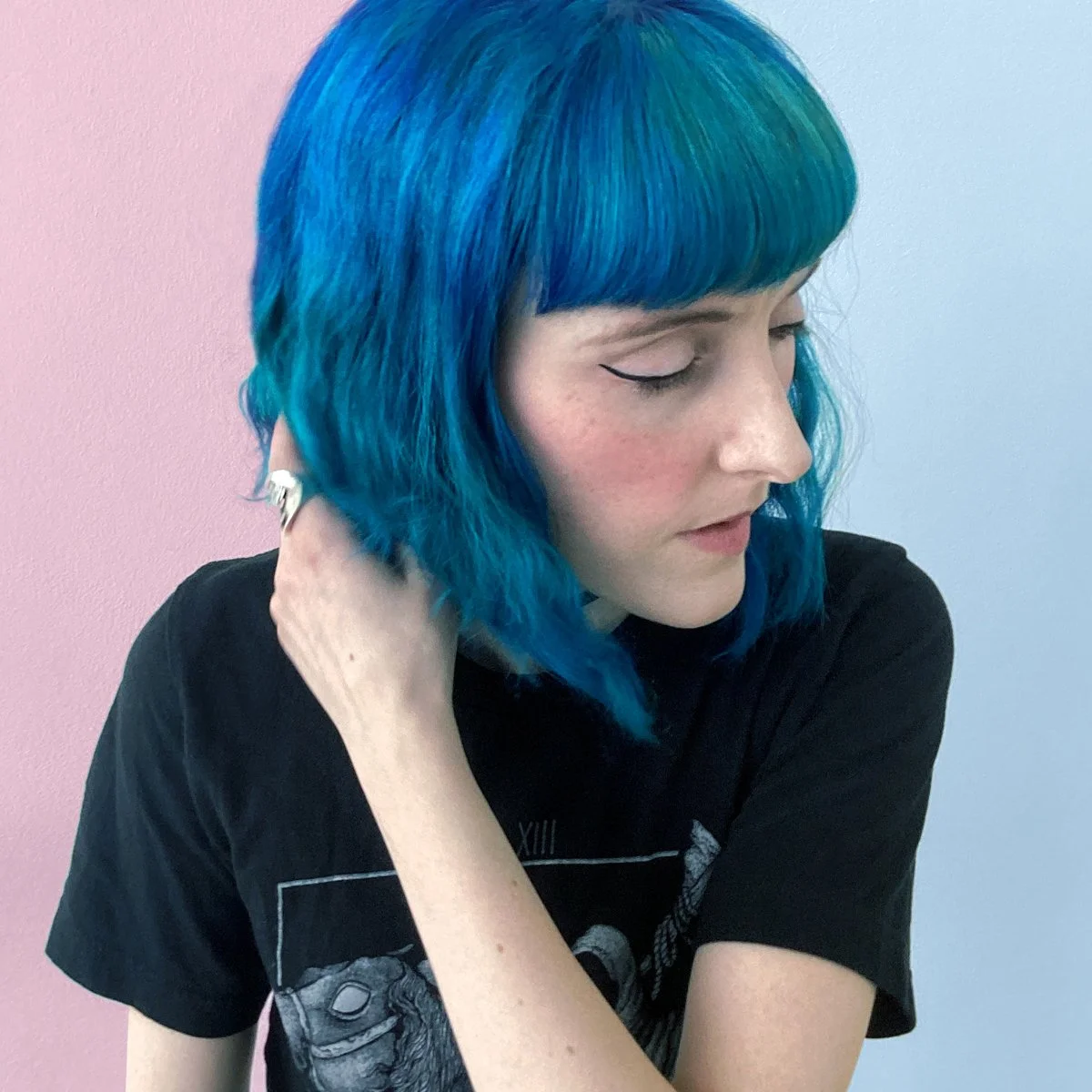Anatomy of a Post-True Crime Novel by Jade Wallace
July 2, 2025
There are two atria in the human heart, and there are two basic assumptions that give lifeblood to true crime media. The first, epistemological: that the perpetrator(s) can be identified with adequate certainty. The second, moral: that the criminal justice system can deliver the appropriate consequences for a crime.
However, for some people—and particularly some novelists—these tenets are beating a guilty tattoo beneath the floorboards. At a time when debates blaze over reformation of the criminal justice system, and over police and prison abolition, in Canada and the U.S., a similar conflict is playing out in our literature.
This essay examines five contemporary novels to show how they upend, and transcend, the true crime genre entirely, offering us a new vision of how to write about violence.
The True Crime Problem
Over the past decade or so, the true crime genre has been undergoing a well-deserved reckoning in mainstream discourse. Though as old as journalism itself, the ever-popular genre surged in visibility and accessibility in the 2010s as podcasts, vlogs, and streaming services helped true crime content proliferate. At the same time, social movements that brought criminal justice systems under the microscope were gaining widespread traction both online and in real life across Canada and the U.S.
In 2013, Black Lives Matter was formed after the acquittal of the assailant in the shooting death of Trayvon Martin. In 2015, the Truth and Reconciliation Commission published a set of Calls to Action for Canada, which included a variety of criminal justice reforms. 2016 saw the commencement of Canada’s National Inquiry into MMIWG, which concluded in their final report in 2019 that “persistent and deliberate human and Indigenous rights violations and abuses are the root cause behind Canada’s staggering rates of violence against Indigenous women, girls and 2SLGBTQQIA people” and called for “transformative legal and social changes.” The #metoo movement came to prominence in 2017, the same year that House of Anansi published Tanya Talaga’s damning, multi-award winning work of nonfiction, Seven Fallen Feathers, which revealed how the racism and colonialism of Thunder Bay’s policing and education systems have been desperately failing Indigenous youth. 2020 brought a surge of interest in long-standing ideas of police and prison abolition, with calls to defund the police and invest in public services following the killing of George Floyd by a cop (see Levintova).
The true crime genre is intimately connected to the criminal justice system. True crime media typically takes as its starting point the presumptions that: 1) the truth of violence is best understood through the lens of criminality; and, 2) that violence can best be deterred, punished, or otherwise addressed through legal mechanisms. While the genre may contain critiques of the legal system, typically these have an eye toward a more effective legal system, not toward the destruction of the system.
These presumptions can be seen in what seem to be the prevailing attitudes of true crime’s audience. A 2011 study by Lisa A. Kort-Butler and Kelley J. Sittner Hartshorn found that people who watched “nonfictional crime programming” were simultaneously more fearful of becoming victims of crime, and more likely to be supportive of the death penalty, even as they were skeptical of the justice system’s existing effectiveness in mitigating crime rates.
This was in contrast with “news viewership,” which “predicted neither fear of crime nor criminal justice attitudes.” In other words, people who watch true crime portrayals of violence are more likely to fear crime and support harsh penalties for crime. However, people who watch news portrayals of crime are not more likely to have any particular attitudes toward crime. These findings suggest that the way true crime media frames its subject may have an impact on how viewers receive information about crime and violence. This is a reality that should, at the very least, make us pause to question the social value of true crime media.
The Rise of “Post,” “Highbrow,” or “Ethical” True Crime
It was inevitable that cultural and artistic works would respond to the tension between true crime’s popularity and its highly questionable social positioning. There have, of course, been efforts within the genre itself to become more ethical: creating victim or survivor-centred narratives, decentralizing perpetrators, eschewing sensationalism, highlighting the failures of the justice system, working to ensure that stories of oppressed and marginalized groups receive their due coverage, and considering the social factors that contribute to violence. Alice Bolin described this phenomenon as “post-true crime” or “highbrow true crime” in her widely-cited Vulture essay from 2018, “The Ethical Dilemma of Highbrow True Crime.”
For Bolin, “Post-true crime is explicitly or implicitly about the popularity of the new true-crime wave, questioning its place in our culture, and resisting or responding to its conventions.” She says the “best-case scenario” for true crime media entails “parsing famous cases from multiple angles and in multiple genres, trying to understand them both on the level of individual choices and cultural forces,” and she sees “personal accounts” that tell the stories of crime “from close-up” as the ideal vehicle.
Similarly, Nina Jones wrote in a 2022 Ethical Space article that the “post-true crime movement” is “an attempt to redress and reframe the genre by resituating victims’ stories within the narrative, and increasing the representation of stories from LGBT+ communities and non-white perspectives.”
These definitions of post-true crime sound remarkably similar to so-called “ethical true crime,” which has been described by AJ Willingham as, “the kind that puts victims and their loved ones first, or explores how and which cases get solved and how the legal system bears out,” or the kind “that focuses on cases of missing and exploited Indigenous people and people of color.”
And who wouldn’t want a more ethical approach to true crime?
The Novelists Intervene
While they may be an improvement over past versions of true crime, “post-true crime” or “highbrow true crime” as articulated by Bolin and Jones, and “ethical true crime” as articulated by Willingham, are essentially reformist in nature—and some people want to see more than just reform of the true crime genre. Here is where the literary fiction writers come in, with a post-true crime approach that seeks to undo the true crime genre entirely, rather like postmodernism was not content to be a self-conscious version of modernism, but ultimately wanted to dismantle universal narratives from the ground up.
In this essay, we’ll look at five examples of a more revolutionary approach to post-true crime writing from across Canada and the U.S. Published between 2016 and 2024, the chosen five are meant to be illustrative, not exhaustive, and have been chosen for their diversity of approaches to the problem of true crime. Their concerns range from issues with the underlying aesthetics and ethics of true crime reportage, to deep critiques of the carceral system itself. Taken together, as snapshots across time, we can see how a more revolutionary approach to post-true crime has been emerging over the years, and is likely to continue.
Tananarive Due said in a 2022 interview with the Horror Writers Association,
I can’t watch or listen to true crime stories because I’m so appalled by human evil. Writing horror has taught me how to compartmentalize the things I find most scary in life into bite-sized pieces that can help me and my readers get our emotional bearings and keep on going.
Due, of course, writes horror, not post-true crime, but her basic concern—what form of narrative allows us to grapple most effectively with the social problem of violence?—is the same one that seems to drive post-true crime writing.
It is not surprising that, for many, fiction is the ideal refutation of, and refuge from, true crime. Most immediately, one appeal of a novel is that it is unburdened by fact and can avoid potential harm to victims and survivors by simply not writing about real people. The post-true crime novels we are about to contemplate are, like true crime, very much interested in real-world violence—however, post-true crime novels do not assume that a literal approach to truth or a legal approach to crime are necessarily the best vehicles for confronting this issue.
An Examination of Five Post-True Crime Novels
Two disclaimers before I start. First, that “post-true crime novel” is not (yet) a recognized sub-genre. I have no idea whether these authors would agree that it’s an accurate label for their books, though obviously I think it fits well. Apologies in advance to any authors (or publishers) who may disagree. Second, I should mention that the discussion below does not shy away from revealing twists, endings, or spoilers of books. Unfortunately, these are critical to understanding how the texts function, and I will say in my defence that all the books discussed are now more than a year old, so I am not giving away any brand-new surprises.
Zoe Whittall’s The Best Kind of People
By May 2016, two notorious Canadian sexual assault trials, both related to alleged acts by a former employee of the CBC against several women, were wrapping up a year-and-a-half after charges were originally laid. The only legal result? Acquittals and dropped charges. When The Best Kind of People—in which George, a teacher, family man, and beloved community member, is arrested and tried for sexual offences against his students—came out later that year, it couldn’t have felt timelier.
Though Whittall’s narrative setup was very different from real life, the way they both played out was remarkably similar: the man loses his job, but life goes on, and he largely escapes significant consequences, even as those around him suffer. By the end of The Best Kind of People, it is clear that everyone except the alleged perpetrator will bear the burden of what has taken place. As Whittall puts it, “Everyone in the family had changed significantly, except George” (403). Meanwhile, the man’s accusers are raked over the coals in the media and through gossip, accused by one local journalist of “some sort of childish female conspiracy or form of mass hysteria” (397). Simultaneously, a neighbour and friend of the family flirts with George’s teenaged daughter in order to glean information about the case so that he can write a scantly ‘fictionalized’ and heavily sensationalized version of events. One of the characters says of the book, “It’s ridiculously terrible [...] The masses will fucking love it” (385). Whittall’s view of true crime writing, or true crime-adjacent writing, is decidedly cynical about the genre’s motives and results, and her assessment of the legal system is hardly more optimistic.
Ultimately, Whittall is not interested in telling readers whether George has done what has been alleged, or proving that the legal system has conclusively failed. In a way, the ending of The Best Kind of People is reminiscent of Ariel Dorfman’s play Death and the Maiden, in the sense that, factually, guilt is never established within the narrative, but the text does call upon the reader to pass, or consciously suspend, judgment, and the reader’s decision is likely to reflect their own beliefs about, among other things, how they view women and girls testifying to their abuse.
In The Best Kind of People, the obvious and deeply rooted problem is not the legal system itself. Whittall is not pointing to reform of law or legal processes as possible solutions to the problematic nature of sexual abuse trials. What she’s pointing to, as a much more endemic problem, is sexism. Beliefs in the benevolence of the patriarchy, in the eternal childishness and dependency of women, and the like, pervade the society of the novel. It’s in the news, it’s in the rumours, it’s even in the hearts of many of the women themselves. And a legal system cannot truly compensate for that kind of bias, it can only be a victim of it. This deep, foundational distrust in the capacity of the legal system, as a system that might even be beyond reform, is to me one of the hallmarks of post-true crime writing.
Kalisha Buckhanon’s Speaking of Summer
Speaking of Summer is, on its face, a very different book than The Best Kind of People, and yet it ends up in a remarkably similar place. Ostensibly, Speaking of Summer is a book about a Black woman named Autumn, desperately searching for her missing twin sister Summer. She finds it difficult to get anyone to take the case seriously, which makes sense to the reader, because it is consistent with the well-known propensity of law enforcement to prioritize or deprioritize cases based on the victim’s race, socioeconomic status, and the like. Autumn’s only ally in the search for Summer is a Black police detective named Montgomery, who seems sympathetic to her plight, even if he is never able to make much progress on the case.
In the first two-thirds or so of the book, the reader gets an up-close view of the widely acknowledged failings of the legal system with respect to missing Black women. This part of the novel also features passing references to news items that likewise reflect the racist tendencies of law enforcement. For example:
[A] young Black woman, Sandra Bland, got stopped somewhere in Texas for changing lanes improperly. She somehow found herself fighting with a White male cop over this [...] Only time would tell if her ‘suicide’ in her jail cell was really foul play. (174)
And then the novel takes a decisive hairpin turn, which is foreshadowed when Montgomery tells Autumn:
It feels like we’re running out of our options to keep thinking about Summer. I’ve helped you push police to do more than they wanted to do. I’ve been to your home, met neighbours, read the journals. My hands are tied with how much privacy I can invade to question others further. It’s time for you to think about yourself, and how your life can go on, with or without Summer. (153, emphasis added)
“Detective” Montgomery is revealed to be not a police officer, but Autumn’s psychiatrist. His evidence-gathering has, in fact, been a means of determining what exactly Autumn is suffering from, and his conclusion is that Summer is a manifestation of Autumn’s dissociative identity disorder. He tells Autumn,
there is no Summer. I thought she could be a delusion, and you’d need medication. But you don’t hear her or see her. You’ve been saying the opposite. You only identify with her, and sometimes even as her. (183)
In less capable hands than Buckhanon’s, the narrative might stop there, shocking twist revealed. But Buckhanon is legitimately out to critique the criminal justice system, and so there are further revelations that suggest the problems with law enforcement are even deeper than initially supposed. Summer, it turns out, is an alter of Autumn who came into being as a response to ongoing sexual abuse by Autumn’s stepfather, Cole. As Autumn explains,
I met Summer the last day of camp [...] She was waiting in the rocking chair when I came home. She looked like me, grumpier though [...] Summer knew. She knew it all. But she liked me anyway. And as she came along with me to block Cole, I knew she had been there with me all along. (226)
Autumn’s abiding belief that Summer is her twin, rather than her alter, is one that develops over time. What is key here is that, beneath the unreal, symptomatic ‘crime’ of Summer’s disappearance, is an actual crime of child sexual abuse. Like Whittall’s George, Buckhanon’s sexual abuser Cole never receives any real measure of justice. There is a minor local scandal, but life goes on, and it is Cole’s family members who carry the consequences of his actions.
For Buckhanon, this failure of the criminal justice system is, yes, still related to racism and sexism and everything we already assumed it was—but it is also very much related to class inequity. Autumn’s mother first gets together with Cole, and later stays with him, because he is her only path to economic security. After Cole begins living with the family, Autumn says, “We saw how quickly Mama ran after the mailman with stamped envelopes ready, rather than bill envelopes lingering on our lazy Susan” (149). What is the criminal justice system supposed to do about that? It cannot give Summer’s family economic security, it can only, at best, put Cole in jail and force the family to suffer a different type of misfortune. Like The Best Kind of People, Speaking of Summer makes clear that the problem of violence, and therefore the solutions as well, must extend far beyond the existing legal system, and necessitate broader cultural and social changes.
This is one of the key features that differentiates actual post-true crime writing from ethical, highbrow, or so-called “post” true crime: a radical belief that criminalization cannot solve the problem of violence. Attempts to make the criminal justice system, and true crime writing, more inclusive, diverse, equitable, or otherwise ethical are not enough, and may well never be enough, to make the system effective. Violence is a built-in feature of the criminal justice system, and through that system certain individuals and demographics are repeatedly disempowered. The only real solution to violence would be to alter the conditions of society as a whole. Whittall and Buckhanon are never prescriptive or didactic about how to respond to violence, but their novels, to me, do both lead toward that one inevitable conclusion.
Catherine Hernandez’s Behind You
Catherine Hernandez’s Behind You, the most recent of the three novels, contrastingly takes a more illustrative approach, pointing us toward practical ways that individual actions can contribute to, or mitigate, the prevalence of violence on a social level.
The basic gist of Behind You is that the protagonist Alma has a day job video editing “garbage” true crime segments that “poison” people (12), and her work is brushing up disconcertingly against her personal life. She’s haunted by memories of the Scarborough Stalker (a thinly-veiled fictionalization of the Scarborough Rapist); she’s distressed by her teenaged son’s burgeoning abusive tendencies toward his girlfriend; she’s hit a rocky patch with her wife that is forcing her to confront her own relationship with consent.
None of these problems, of course, are solved by the fact that the Scarborough Stalker is in jail. I’m reminded of Nicole Murdock’s 2022 piece on MMIWG for CBC Opinion:
The truth is that no single arrest will make Indigenous women safer. [...] Collectively, we must reject the sensationalized narrative of alleged serial killers for clickbait and entertainment. Indigenous women are sacred and we refuse to be buried beneath headlines belonging to those who seek to destroy us.
The threat of violence looms no matter how many perpetrators are imprisoned. And neither prison nor true crime media are much help in Alma’s world either. Alma, thinking of one of the Scarborough Stalker’s victims, reflects:
The news felt like an answer and a question, satisfying and dissatisfying all at once. No matter what mystery was solved, for your family your absence remained a wound that would never heal. No. I’m wrong about that [...] Of course there will be healing. I don’t want to rob your family of that. (288)
For Hernandez, the solutions to violence, or at least the inception of them, begin not with the individual, and certainly not with true crime reportage, but with the individual. Alma has to look critically at her own views of power and consent; she has “to parent my son and teach him to respect his ex-girlfriend” (279); she has to quit her day job and make a documentary about a victim that “would be about her life. Not her death” (293). Our focus, the novel suggests, must pan entirely toward the ways individuals resist violence—rather than dwelling on the ways they succumb to it, as true crime media inevitably does. Hernandez shows how Alma’s actions ripple outward, touching first her family, then her wider community.
To be clear, Hernandez is not making a facile suggestion that one person can fix violence at large. However, she does seem to be saying that cultural shifts are rooted in reciprocal relationships between individuals and their communities, and between communities and their societies. Because of this, the ways we choose to build ourselves, and our relationships with those close to us, do have bearing upon wider social norms. So, in fact, our personal relationships and communities can affect violence at a broad social scale.
Michael Melgaard’s Not That Kind of Place
All of the novels we’ve looked at so far in this essay have engaged, to some extent, with a metatextual critique of true crime as a genre, though none with the near-singular focus of Not That Kind of Place.
Melgaard’s novel follows David, a middle-aged man still living in his childhood home after the rest of his family has died. His parents died of old age, but his sister, Laura, was the victim of an unsolved murder decades ago that still casts a shadow over their small hometown. One of the most significant facets of the novel is the way David is dogged by a journalist, James, who wants to write about Laura’s murder. James had been talking to David’s mother, and even in the immediate aftermath of the mother’s death, the journalist has the gall to repeatedly contact David to continue with further interviews: “James knew it was a challenging time, and he was sure Laura’s death was a difficult subject for David to discuss, but he hoped David would be able to find some time to call him back” (33).
The clearly implied disdain for true crime media that grounds Not That Kind of Place is made explicit in an interview Melgaard did with Open Book:
I listened to a lot of true crime podcasts—not the good, award-winning ones, but the ones where it’s just someone piecing together what they can find on the internet without doing their own research or interviews. I’m amazed by the amount of it that is out there—a whole cottage industry of amateur podcasters dredging up old murders, hoping they’ll be the next Serial or My Favourite Murder or whatever, but expecting they can do that without doing any proper journalism or research. They’re basically reading Wikipedia articles with sound effects added. The more of these podcasts I listened to, the more disgusted I got with how exploitative they were, and so the more the main character of the book became irritated with a reporter showing up to write yet another article about his family’s trauma.
And yet, James, as Melgaard makes apparent, isn’t even a bad journalist. David reads an earlier true crime article that James wrote, commenting:
James’ article, published a year after the murder, filled in the unknown parts of the story [...] James wrote about the kid’s past [...] James closed with a quote from an uncle [...] It was a good read. David could see why it had won an award. (84)
James is also patient and considerate with David’s mother, letting her talk at length about Laura, including aspects of her life unrelated to her murder. James reassures her that “It was important for him, for the story he wanted to tell, to have this kind of context” (264). And David’s mother obviously gets something out of the interview process as well. As she says to James “I’ve told you [...] a lot of things I wish I could tell David. It’s so hard to actually talk to him about this sort of thing” (264). James serves a quasi-therapeutic role, giving David’s mother a means of connection when she has no one else to talk to, even years after Laura’s death.
Yet the fact that James is, for most intents and purposes, a perfectly good journalist, makes his instances of callousness all the more appalling, signalling that they are professional norms rather than personal failings, thereby calling into question the intentions and effects of true crime writing—including the ‘ethical’ kind.
If Melgaard has little respect for true crime media, he has even less for the criminal justice system. The local police, in addition to failing to solve Laura’s murder, are cruelly dismissive. One cop says to David, not realizing her is Laura’s brother, “They figure she got into something bad, got killed for it. Her mouth was filled with rocks [...] That’s what they do to rats. Kids getting in with the fucking bikers. Serves them right, you ask me” (293). Similarly, Carolyn, a social worker and friend of David’s, recounts another instance of the cops’ victim-blaming incompetency:
my client got beat up by a guy, and instead of being brought to a hospital she was put in jail for the night. The cops finally brought her to get looked over in the morning, and when the hospital discharged her she was there, alone, without any of her things, and had to figure out a way to get home to Nanaimo on her own after she was released. And then the cops tell the world she’s a sex worker and wash their hands of doing anything about it. (121)
One might justifiably come away from Not That Kind of Place thinking of true crime media and the criminal justice system not as solutions to violence, but as machines whose only functions are to give the appearance that something is being done in the name of public safety (and maybe, as a collateral benefit, a way to line pockets)—and which, in reality, actually cause a great deal of violence and harm.
James Hannaham’s Didn’t Nobody Give a Shit What Happened to Carlotta
This view is seemingly shared by Didn’t Nobody Give a Shit What Happened to Carlotta. The novel follows Carlotta, a Black trans woman who has been housed for decades in a men’s prison for a crime she says she was present for but did not commit. Carlotta’s wrongful conviction is not a unique travesty, as Hannaham makes clear; it’s endemic to the criminal justice system. As Carlotta’s lover puts it:
The system needs blood [...] ‘You build a whole buncha high-tech prisons, hire a shitload of COs, and it’s like, can’t no brand-new, state-of-the-art jails be sitting round empty, right? It’s like Field of Motherfucking Dreams, yo. They built that shit, so somebody ass gotta come. And you and me know that’s gon be you and me. (25)
Prison is a cruel place for anyone, but particularly for a trans woman like Carlotta. She recounts unusually frequent trips to solitary, and constant sexual assault and abuse, including by prison guards, in addition to all the indignities of imprisonment that cis men face.
Early in the novel, Carlotta does manage to get out on parole, despite pleas from her white accusers that she be kept locked up. However, even outside of prison, Carlotta’s struggles are hardly at an end. Parole entails a demanding set of obligations—find stable housing, land a job, don’t be in the presence of anyone drinking alcohol—that are nigh impossible for a woman who just spent the last twenty years in prison. Out of desperation, she returns to live in a closet in her family’s severely over-crowded townhouse, but given that they are not teetotallers this immediately puts her in violation of her parole conditions. With almost no money, no recent non-prison work experience, and few qualifications, Carlotta might have an easier time tracking down the Holy Grail than finding a job, though she searches gamely. Prison, it is clear, not only robbed Carlotta of twenty years of freedom, it has also set her up so as to make it almost inevitable that she will have to turn to crime and/or return to prison if she wants to survive. Rather than being a solution to violence, the criminal justice system is revealed to be a perpetrator and perpetuator of violence.
And yet, throughout the novel, Carlotta is decidedly conscious of how she is perceived, and her internal monologue refuses any simplifying characterizations, either for herself or for anyone around her:
maybe it’s half these motherfuckers out here is folks that been inside, I dunno, and I’on’t wanna know, I just wanna be me, I just wanna be a human fuckin person like ev’body else, without nobody tellin me not to do who I am, holdin me gainst my will, don’t wanna be no statistic or no tragedy or no symbol of nothin goin wrong in society. Cause I’m what’s right, honey, I’m what’s goin right. (287)
Didn’t Nobody Give a Shit What Happened to Carlotta is distinct from the other novels on this list, in that it is not explicitly concerned with the true crime genre in any way. Implicitly, however, the novel starkly resists all the usual narratives that true crime tries to apply to the problem of violence. The novel calls into question the validity of criminal convictions and the ability of the justice system to discern truth; it condemns the criminal justice system for causing violence rather than reducing or preventing it. In effect, the novel suggests, the criminal justice system may neither allow us to understand violence, nor to respond to it in a morally defensible way.
And Hannaham is certainly not interested, here, in ‘ethical’ or reformist approaches to true crime narratives either. If anything, Carlotta, the alleged perpetrator, is the one being victimized by the criminal justice system, though surely victim is hardly the word she would choose for herself. She is, after all, determinedly, not a statistic or a tragedy or a symbol.
Case Opening Note
This, it might be said, is what unites all these genuinely revolutionary post-true crime novels. In their depth and breadth, they allow us to look through, and look past, the narratives that limit considerations of violence to the stifling simplicity of a criminal framework. Though this essay is retrospective, it is my hope and prediction that the patterns we see here are evidence of the emergence of a new genre, and that we will see even more development in this literary realm in the years to come.
Post-true crime literature, to earn its name, must do more than simply improve the true crime genre. It must continue to upend, and transcend, the basic tenets of criminal justice and its narrative strictures. If there is a heart beneath the floorboards, post-true crime literature has the nearly impossible task of unearthing the heart and restoring it to a living body, wholly different from the one that came before.
Bibliography
Bolin, Alice. “The Ethical Dilemma of Highbrow True Crime.” Vulture (August 1, 2018). https://www.vulture.com/2018/08/true-crime-ethics.html
Buckhanon, Kalisha. Speaking of Summer. Counterpoint Press, 2020.
Due, Tananarive. “Black Heritage in Horror: An Interview with Tananarive Due.” Horror Writers Association, February 14, 2022. https://horror.org/black-heritage-in-horror-an-interview-with-tananarive-due/
Hannaham, James. Didn’t Nobody Give a Shit What Happened to Carlotta. Back Bay Books, Hachette Book Group, 2023.
Hernandez, Catherine. Behind You. HarperAvenue, Harper Collins Canada, 2024.
Jones, Nina. “Curing an ethical hangover: A forensic examination of the potential of the post-true crime movement,” published by Ethical Space: The International Journal of Communication Ethics (19.3/4) 2022, pp. 60. https://openurl.ebsco.com/EPDB%3Agcd%3A5%3A28421877/detailv2?sid=ebsco%3Aplink%3Ascholar&id=ebsco%3Agcd%3A164698633&crl=c&link_origin=www.google.com
Kort-Butler, Lisa A. and Kelley J. Sittner Hartshorn. “Watching the Detectives: Crime Programming, Fear of Crime, and Attitudes about the Criminal Justice System.” The Sociological Quarterly (52.1) 2011, pp. 36-55. https://www.researchgate.net/publication/49851882_Watching_the_Detectives_Crime_Programming_Fear_of_Crime_and_Attitudes_about_the_Criminal_Justice_System
Levintova, Hannah. “Here’s Where the Movement to Defund Police Is Gaining Momentum.” Mother Jones, June 6, 2020. https://www.motherjones.com/politics/2020/06/heres-where-the-movement-to-defund-police-is-gaining-momentum/
Melgaard, Michael. Not That Kind of Place. House of Anansi, 2023.
“Michael Melgaard Delves into the Dark Side of True Crime in His Debut Novel.” Open Book, August 30, 2023. https://open-book.ca/News/Michael-Melgaard-Delves-into-the-Dark-Side-of-True-Crime-in-His-Debut-Novel
Murdock, Nicole. “Sensationalizing alleged killers will not bring our missing and murdered Indigenous women and girls home.” CBC Manitoba, Opinion. https://www.cbc.ca/news/canada/manitoba/opinion-mmiwg-serial-killers-1.6678088
National Inquiry into Missing and Murdered Indigenous Women and Girls. “Reclaiming Power and Place: The Final Report of the National Inquiry into Missing and Murdered Indigenous Women and Girls.” https://www.mmiwg-ffada.ca/final-report/
Talaga, Tanya. Seven Fallen Feathers: Racism, Death, and Hard Truths in a Northern City. House of Anansi, 2017.
Truth and Reconciliation Commission of Canada. “Truth and Reconciliation Commission of Canada: Calls to Action.” National Centre for Truth and Reconciliation, University of Manitoba. https://ehprnh2mwo3.exactdn.com/wp-content/uploads/2021/01/Calls_to_Action_English2.pdf
Whittall, Zoe. The Best Kind of People. House of Anansi, 2016.
Willingham, AJ. “True crime sells, but fans are debating the ethics of their passion.” CNN Entertainment, January 6, 2023. https://ktvz.com/entertainment/cnn-entertainment/2023/01/26/true-crime-sells-but-fans-are-debating-the-ethics-of-their-passion/
Photo credit: Mark Laliberte
Jade Wallace (they/them) is a queer and disabled poet, novelist, and critic. Their critical work has appeared in venues including Ampersand Review, Bywords, CAROUSEL, CV2, League of Canadian Poets, Malahat Review, This Magazine, and Writer's Digest. They are the author of two poetry collections, Love Is A Place But You Cannot Live There and The Work Is Done When We Are Dead (Guernica Editions 2023 and 2026) and a genderless novel ANOMIA (Palimpsest Press, 2024). Wallace is also cofounder of the collaborative writing entity MA|DE, whose works include the bpNichol Chapbook Award-shortlisted chapbook A Trip to the ZZOO (Collusion Books 2020) and two full-length poetry collections, including the debut ZZOO, out in 2025 with Palimpsest Press. More: jadewallace.ca + ma-de.ca



